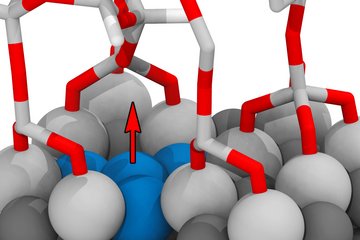All genres
21.
Journal Article
Bone-like crack resistance in hierarchical metastable nanolaminate steels. Science 355 (6329), pp. 1055 - 1057 (2017)
22.
Journal Article
Interfacial hydrogen localization in austenite/martensite dual-phase steel visualized through optimized silver decoration and scanning Kelvin probe force microscopy. Materials and Corrosion - Werkstoffe und Korrosion 68 (3), pp. 306 - 310 (2017)
23.
Journal Article
Recent progress in microstructural hydrogen mapping in steels: quantification, kinetic analysis, and multi-scale characterisation. Materials Science and Technology 33 (13), pp. 1481 - 1496 (2017)
24.
Journal Article
Interstitial atoms enable joint twinning and transformation induced plasticity in strong and ductile high-entropy alloys. Scientific Reports 7, 40704 (2017)
25.
Journal Article
Complexion-mediated martensitic phase transformation in Titanium. Nature Communications 8, 14210, pp. 1 - 8 (2017)
26.
Journal Article
Multiple mechanisms of lath martensite plasticity. Acta Materialia 121, pp. 202 - 214 (2016)
27.
Journal Article
From electronic structure to phase diagrams: A bottom-up approach to understand the stability of titanium-transition metal alloys. Acta Materialia 113, pp. 311 - 319 (2016)
28.
Journal Article
Metastable high-entropy dual-phase alloys overcome the strength–ductility trade-off. Nature 534, pp. 227 - 230 (2016)
29.
Journal Article
On the mechanism of {332} twinning in metastable β titanium alloys. Acta Materialia 111, pp. 173 - 186 (2016)
30.
Journal Article
Spectral TRIP enables ductile 1.1 GPa martensite. Acta Materialia 111, pp. 262 - 272 (2016)
31.
Journal Article
Hydrogen-assisted damage in austenite/martensite dual-phase steel. Philosophical Magazine Letters 96 (1), pp. 9 - 18 (2016)
32.
Journal Article
Multi-probe microstructure tracking during heat treatment without an in-situ setup: Case studies on martensitic steel, dual phase steel and β-Ti alloy. Materials Characterization 111, pp. 137 - 146 (2016)
33.
Journal Article
Non-equiatomic high entropy alloys: Approach towards rapid alloy screening and property-oriented design. Materials Science and Engineering A: Structural Materials Properties Microstructure and Processing 648, pp. 183 - 192 (2015)
34.
Journal Article
Deformation mechanism of ω-enriched Ti–Nb-based gum metal: Dislocation channeling and deformation induced ω–β transformation. Acta Materialia 100, 12375, pp. 290 - 300 (2015)
35.
Journal Article
Phase stability of non-equiatomic CoCrFeMnNi high entropy alloys. Acta Materialia 98, pp. 288 - 296 (2015)
36.
Journal Article
From High-Entropy Alloys to High-Entropy Steels. Steel Research International 86 (10), pp. 1127 - 1138 (2015)
37.
Journal Article
Enhancing Hydrogen Embrittlement Resistance of Lath Martensite by Introducing Nano-Films of Interlath Austenite. Metallurgical and Materials Transactions a-Physical Metallurgy and Materials Science 46 (9), pp. 3797 - 3802 (2015)
38.
Journal Article
High resolution in-situ mapping of microstrain and microstructure evolution reveals damage resistance criteria in dual phase steels. Acta Materialia 96, pp. 399 - 409 (2015)
39.
Journal Article
Damage resistance in gum metal through cold work-induced microstructural heterogeneity. Journal of Materials Science 50 (17), pp. 5694 - 5708 (2015)
40.
Journal Article
3D structural and atomic-scale analysis of lath martensite: Effect of the transformation sequence. Acta Materialia 95, pp. 366 - 377 (2015)











